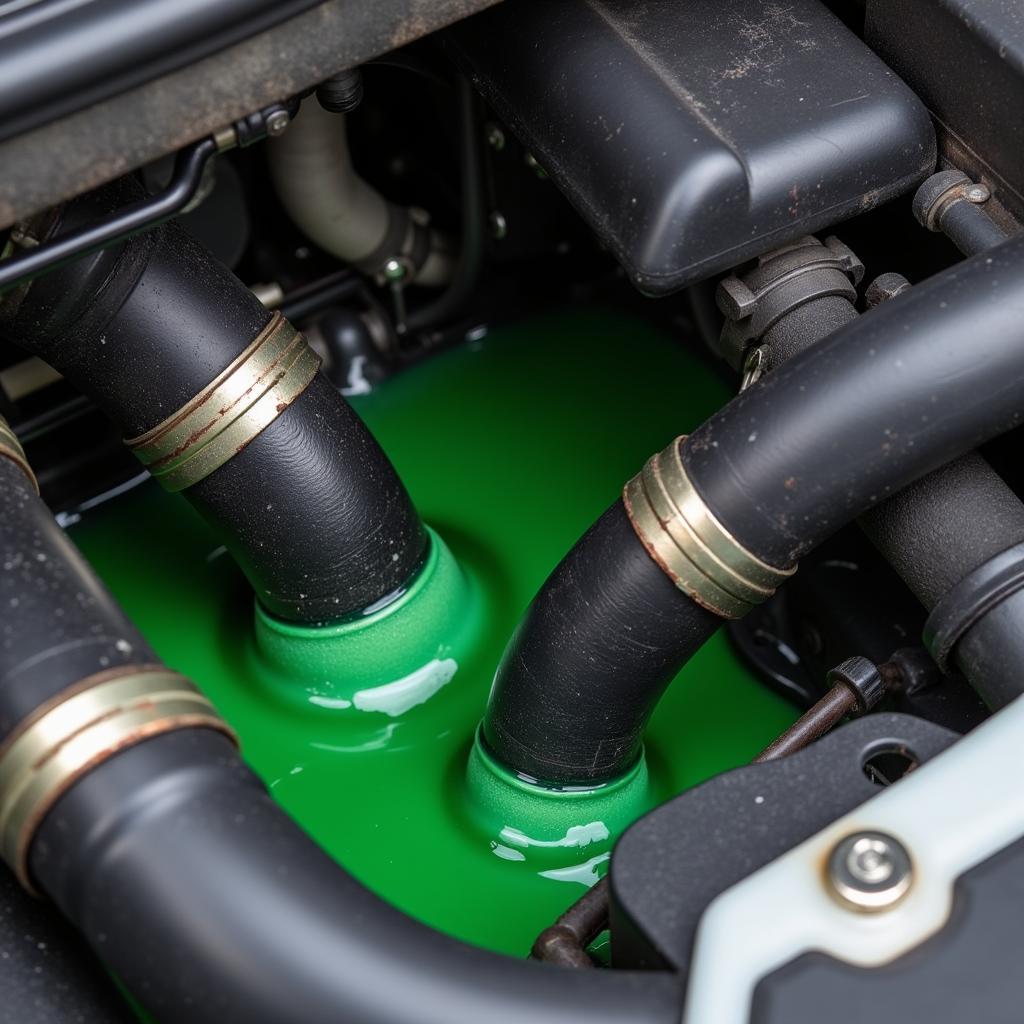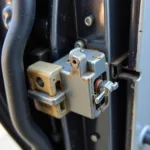Owning a Mercedes A-Class is a statement of sophistication, but even these prestigious vehicles can encounter issues. One common problem A-Class owners face is leaks, which can be frustrating and potentially damaging if left unaddressed. This comprehensive guide delves into the common causes of leaks in Mercedes A-Class vehicles and provides insights into identifying, troubleshooting, and resolving them.
 Mercedes A-Class Coolant Leak Signs
Mercedes A-Class Coolant Leak Signs
Understanding the Significance of Addressing Leaks
Ignoring leaks in your Mercedes A-Class can lead to more severe problems and costly repairs down the line. For instance, a minor coolant leak can escalate into engine overheating, potentially causing significant damage. Similarly, an oil leak can reduce lubrication, leading to increased engine wear and tear. Addressing leaks promptly is essential to maintain your vehicle’s performance, reliability, and safety.
Common Leak Sources in Mercedes A-Class
Several areas in your Mercedes A-Class can be prone to leaks. Here are some of the most common culprits:
1. Coolant Leaks
Coolant leaks are relatively frequent in Mercedes A-Class vehicles. Look out for the following signs:
- Sweet Smell: A noticeable sweet scent emanating from the engine bay or exhaust fumes can indicate a coolant leak.
- Low Coolant Level: Regularly check your coolant reservoir. If the level consistently drops, you likely have a leak.
- Visible Green Fluid: Coolant is typically green. Look for puddles or stains under your parked vehicle.
- Engine Overheating: A leak in the cooling system can cause the engine to overheat, potentially leading to severe damage.
Common Causes: Worn hoses, a faulty radiator, a leaking water pump, or a damaged thermostat housing are common culprits behind coolant leaks.
2. Oil Leaks
Oil leaks, while less frequent than coolant leaks, can be more concerning due to their potential impact on engine health.
- Burning Oil Smell: A distinct burning oil odor inside the cabin or emanating from the engine bay can indicate an oil leak.
- Oil Spots Under the Car: Check your parking space for dark, oily patches, signaling a potential leak.
- Low Oil Level: Regularly monitor your oil level using the dipstick. A consistent drop signals a possible leak.
Common Causes: Oil leaks can originate from a variety of sources, including a degraded valve cover gasket, a damaged oil pan gasket, a leaking oil filter housing, or worn crankshaft seals.
3. Transmission Fluid Leaks
While less common, transmission fluid leaks can significantly impact your A-Class’s drivability.
- Red Fluid: Transmission fluid is typically red. Look for red puddles under your vehicle.
- Slipping Gears: Difficulty shifting gears smoothly or experiencing gear slippage can indicate low transmission fluid due to a leak.
Common Causes: Leaky transmission pan gaskets, worn-out seals on the transmission cooler lines, or a failing transmission pump seal can cause transmission fluid leaks.
Addressing Leaks in Your Mercedes A-Class
When you suspect a leak in your Mercedes A-Class, prompt action is crucial. Here’s what you should do:
- Identify the Leak: Determine the type of fluid leaking based on its color and location.
- Professional Inspection: While some leaks might seem minor, it’s always best to have a qualified mechanic diagnose the problem accurately.
- Timely Repair: Once the leak source is identified, follow your mechanic’s recommendations for repair. Ignoring leaks can lead to costlier repairs in the future.
Preventive Measures
Preventing leaks is always preferable to dealing with them. Regular maintenance practices can significantly reduce the risk of leaks in your Mercedes A-Class:
- Regular Fluid Checks: Make it a habit to check your coolant, oil, and transmission fluid levels regularly.
- Scheduled Maintenance: Adhere to your Mercedes-Benz’s recommended maintenance schedule.
- Quality Parts: When repairs are needed, insist on using genuine Mercedes-Benz parts or high-quality aftermarket alternatives.
Conclusion
Addressing leaks in your Mercedes A-Class promptly is vital to prevent further damage and ensure your vehicle’s longevity. Regular maintenance and prompt attention to potential leaks will keep your A-Class running smoothly for years to come. Remember, addressing issues early can save you from costly repairs in the future.

